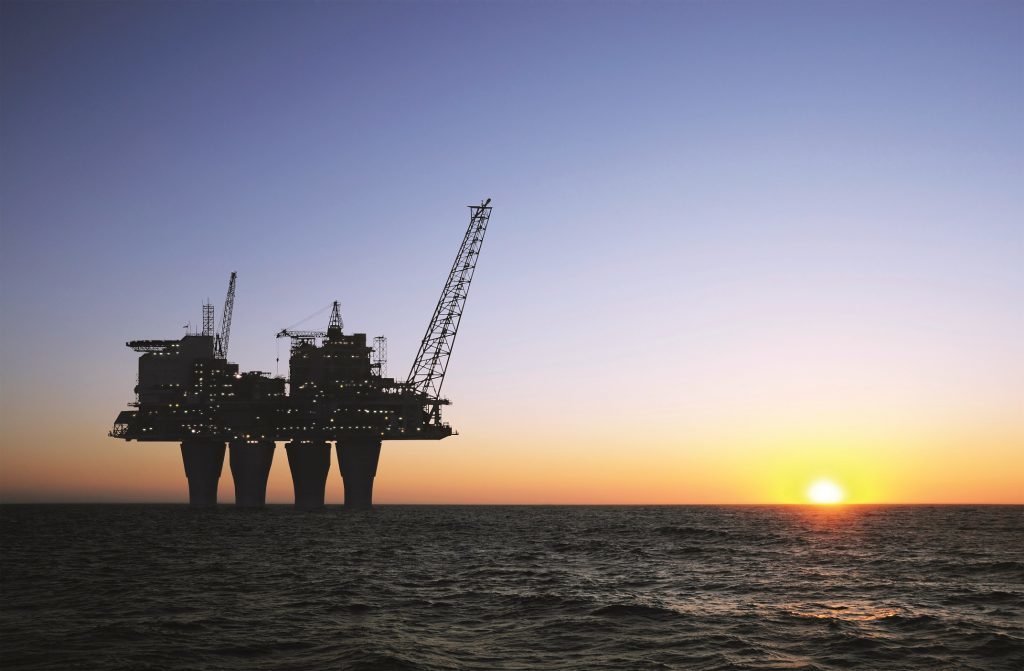
One of the biggest threats to an extended rally in U.S. natural gas prices is lurking in the oil patch.
Gas production in most of the country has dropped amid cost-cutting. Not so in the Permian Basin, the nation’s biggest crude reservoir and one of the few places where drilling has remained profitable. Permian drillers led by Occidental Petroleum Corp. and Pioneer Natural Resources Co. are pumping more oil as prices rise, pushing natural gas extracted as a byproduct from the West Texas play to almost 7 billion cubic feet a day, Bloomberg Intelligence data show. That’s about 8 percent of U.S. supply.
The Permian’s resilience may blindside gas bulls who’ve nudged prices above $3 per million British thermal units for the first time in 16 months, following record demand during a hot summer and rising exports. At the same time, Permian drillers have added 45 rigs in three months, and a new discovery by Apache Corp. in the area promises to chase higher demand with a production surge starting in mid-2017.
“We’re drilling for oil in the Permian, but the dirty little secret is that there are also massive gas fields,” said Scott Hanold, an analyst at Royal Bank of Canada in Minneapolis, in a telephone interview. “The Permian is going to continue to grow, and it’s going to be the 900-pound gorilla.”
Apache’s discovery in the southern reaches of the Permian underscores the potential. The Houston-based crude producer estimates that two areas of the Alpine High finding can support 2,000 to 3,000 wells at oil prices of $50 a barrel and gas prices at $2.92 per million British thermal units, once production starts in the second half of 2017. Gas rose 0.3 percent to $3.350 on the New York Mercantile Exchange at 12:01 p.m. Singapore time.
The Permian is making a swift recovery from a rout in oil prices that battered the energy industry earlier this year, forcing producers to cut output. The 45 rigs added in the region over the past three months compare with just two in the neighboring Eagle Ford shale play during the same period, data from Baker Hughes Inc. show.
That’s because the Permian’s unique geology allows explorers to extract more crude at lower cost, compared with other shale formations. Some wells in the region can break even with crude at $30 a barrel, among the lowest in the U.S, according to Will Foiles, an analyst at Bloomberg Intelligence in New York.
Since wells in some areas of the reservoir can produce more than 50 percent natural gas, based on Bloomberg Intelligence estimates, oil’s rally to a 15-month high will also unleash more of the heating and power-plant fuel on the U.S. market. Crude closed at $50.44 a barrel on Oct. 13.
In the Permian, “the gas economics are totally tied to oil prices, and the higher the oil prices go, the higher the gas production will be,” Randall Collum, an analyst for Genscape Inc. in Sugar Land, Texas, said by phone. “Bullish oil prices are bearish for gas prices.”
Natural gas supplies from the Permian threaten to derail a rally that made the fuel one of the top-performing commodities in the second quarter. Just six months ago, a torrent of supply from shale formations pushed gas prices to the lowest since the 1990s after a mild winter, leaving stockpiles more than 50 percent above normal at the start of spring.
Gas prices have gained as production from gas-focused shale basins, including Appalachia’s Marcellus formation, dwindles and demand picks up. Power plants are burning more of the fuel as coal-fired generators shut, and gas exports to Mexico via pipeline have climbed to a record.
At the same time, Cheniere Energy Inc.’s Sabine Pass terminal in Louisiana is shipping cargoes of liquefied natural gas across the globe.
The boost in gas exports, combined with increased demand for the fuel from U.S. petrochemical manufacturers as that industry expands, has sparked concern that prices for domestic users will jump. Senators including Elizabeth Warren of Massachusetts are urging government officials to slow down approvals for new LNG export terminals.
While production in the Permian is rising, “it’s doing this against this background of growing demand that the market didn’t have to deal with in years past,” Nicholas Potter, an analyst at Barclays Plc in New York, said by phone.
Output from the Permian may catch the gas market unawares, however, as supplies are climbing even as production of the fuel remains an afterthought for drillers like Encana Corp. While gas is boosting the company’s profits in the basin, the company is targeting crude, Douglas Hock, a spokesman for the Calgary-based explorer, said in an e-mail. A spokesman for Occidental declined to comment, and Pioneer didn’t respond to a request for comment.
“It’s good to have, but associated natural gas isn’t the driver of our economic performance in the Permian,” Hock said.
Apache estimates that its new discovery, called Alpine High, holds 75 trillion cubic feet of gas and 3 billion barrels of oil in just two formations in the play.
“If it’s successful, it’s going to produce a significant amount of gas, much more than you’ve seen from these other wells,” RBC’s Hanold said.
Recommended for you
